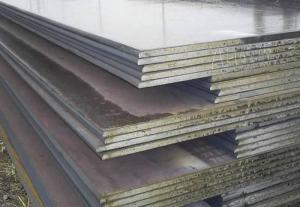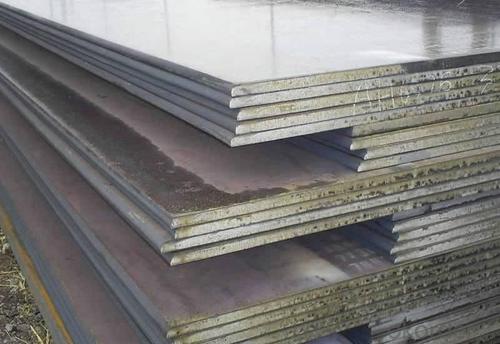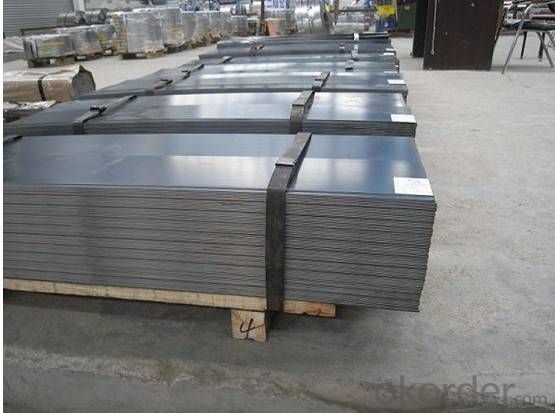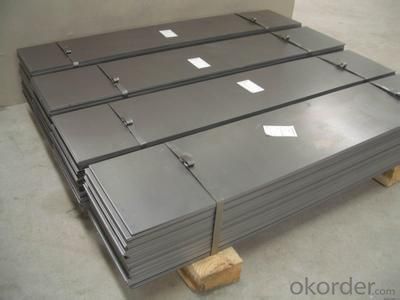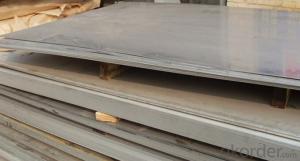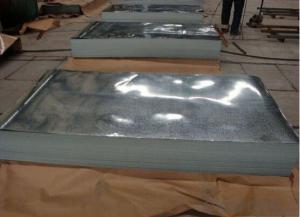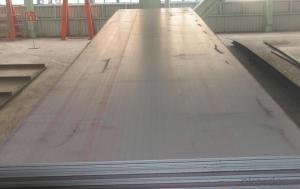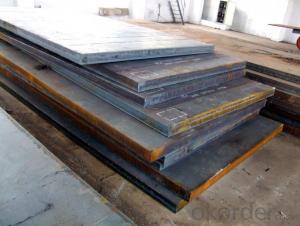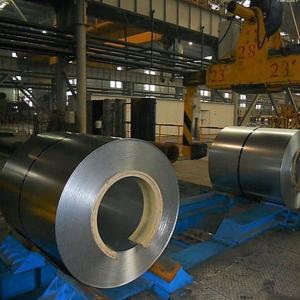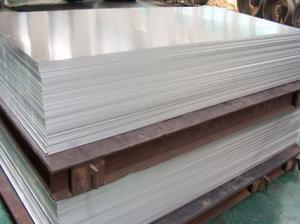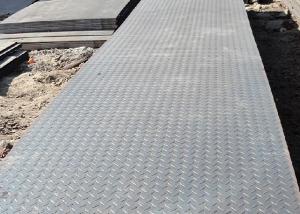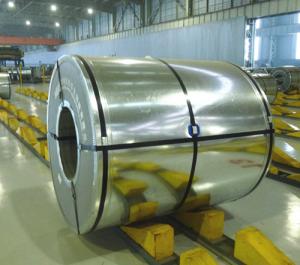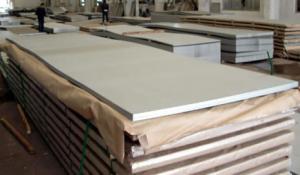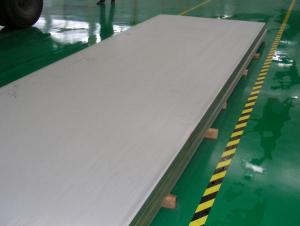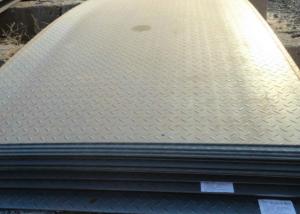Hot Rolled Steel Plate-Good Quality and Best Service
- Loading Port:
- Tianjin
- Payment Terms:
- TT or LC
- Min Order Qty:
- 200 m.t.
- Supply Capability:
- 10000 m.t./month
OKorder Service Pledge
OKorder Financial Service
You Might Also Like
1.Structure of Hot Rolled Steel Plate Description
Aluminum Ingot is with the AL as the main chemical composition. Aluminum Ingot is used for industry,such as automobile,pinning and weaving,electron broadly and so on. Aluminum Ingot has the following advantages: easy control and operation, fast melting.
2.Main Features of the Hot Rolled Steel Plate
•Hot Rolled & Annealing
•Good Quality & Fast Delivery
•Competitive Price & Nice Service
3. Hot Rolled Steel Plate Images
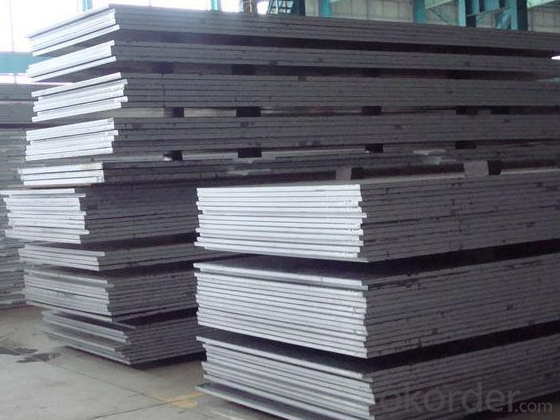
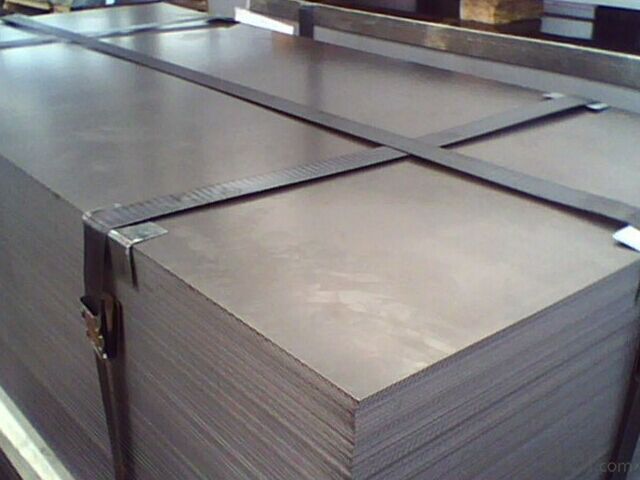
4. Hot Rolled Steel Plate Specification
Thickness | 2-100mm |
Width | 1250mm,1500mm,1800mm,2000mm.,2500mm or as required |
Length | 2000-12000mm |
Standard | AISI, ASTM, BS, DIN, GB, JIS |
Material | A36,SS400,SPCC,SPHC, Q195, Q 235,Q345 |
Tehnique | Hot rolled;cold rolled |
Payment | TT ,L/C |
Packing | Standard seaworthy packing or as required |
Market | Mild east, North/South America, Europe, Asia,Africa etc |
Certificate | BV,SGS,MTC |
Delivery time | Within 7-10 days |
5.FAQ of Hot Rolled Steel Plate
①Condition of Delivery
According to user requirements, can be Hot rolled, normalizing, tempering, normalizing and tempering, quenching and other delivery.
②Which Standard?
According to user requirements, can be delivered the following criteria: national standards, metallurgical industry standards, the United States ASTM, ASME standards, Japanese JIS, German DIN, British BS, European EN, the international ISO standards and the standards specific board and so on.
③What's the usage?
Making pipes, cold strip-welded pipes, cold-bent shaped-steel, bicycle structures, small-sized press-pieces and household decoration goods
- Q: Can steel sheets be used in outdoor applications?
- Steel sheets are a great option for outdoor applications. They possess exceptional durability and strength, enabling them to withstand diverse weather conditions, thus rendering them suitable for outdoor use. The construction industry heavily relies on steel sheets for roofing, siding, and cladding purposes. Additionally, they are extensively utilized in outdoor storage sheds, fences, and gates. To enhance its corrosion resistance against moisture and environmental elements, steel sheets can be coated with galvanization or painting. Consequently, their ability to withstand exposure to such factors is greatly improved. All in all, steel sheets are an exceedingly dependable choice for outdoor applications, thanks to their strength, durability, and versatility.
- Q: Why can iron and steel stick with glue?
- This kind of synthetic resin adhesive has the metal or non-metallic materials sticking to the prison so, partly because the adhesive into the plastic surface of the pores, forming a mechanism combination; on the other hand is because the adhesive and plastic surface chemistry, the molecular junction.
- Q: How are steel sheets coated for corrosion resistance?
- Steel sheets are typically coated for corrosion resistance through various methods such as hot-dip galvanizing, electroplating, or applying organic coatings like paints or powder coatings.
- Q: Can steel sheets be used for kitchen countertops?
- Yes, steel sheets can be used for kitchen countertops. Steel countertops are durable, heat resistant, and easy to clean, making them a popular choice for modern kitchens.
- Q: What are the different types of surface finishes available for steel sheets?
- Some different types of surface finishes available for steel sheets include hot rolled, cold rolled, galvanized, and coated finishes.
- Q: Can the steel sheets be used for medical equipment?
- Yes, steel sheets can be used for medical equipment as they offer durability, corrosion resistance, and ease of cleaning, making them suitable for various applications in the medical field.
- Q: Are steel sheets suitable for oil rig platforms?
- Yes, steel sheets are suitable for oil rig platforms. Steel is commonly used in the construction of oil rig platforms due to its strength, durability, and ability to withstand harsh offshore conditions. It provides the necessary structural integrity and resistance to corrosion, making it a reliable choice for such applications.
- Q: Can steel sheets be used for insulation?
- No, steel sheets cannot be used for insulation. Steel is a good conductor of heat and electricity, so it does not retain heat or prevent heat transfer effectively. In fact, steel sheets can actually conduct heat and cold, making them poor insulators. Insulation materials such as fiberglass, foam, or cellulose are much better at trapping heat and preventing its transfer, which makes them ideal for insulation purposes.
- Q: Are steel sheets susceptible to rusting?
- Steel sheets can indeed be prone to rusting. The composition of steel mainly consists of iron, a metal that has a natural tendency to react with oxygen when in contact with moisture, resulting in the formation of iron oxide, commonly referred to as rust. Consequently, when steel sheets come into contact with water or moisture, rusting can occur gradually. Nevertheless, there exist techniques to hinder or decelerate the rusting process, including the application of protective coatings or the utilization of stainless steel. The latter contains elements like chromium that offer supplementary protection against corrosion.
- Q: What is the average bending radius for steel sheets?
- The average bending radius for steel sheets can vary depending on the thickness and type of steel being used. However, a common range for the average bending radius of steel sheets is between 0.5 to 2 times the thickness of the sheet.
Send your message to us
Hot Rolled Steel Plate-Good Quality and Best Service
- Loading Port:
- Tianjin
- Payment Terms:
- TT or LC
- Min Order Qty:
- 200 m.t.
- Supply Capability:
- 10000 m.t./month
OKorder Service Pledge
OKorder Financial Service
Similar products
Hot products
Hot Searches
Related keywords
